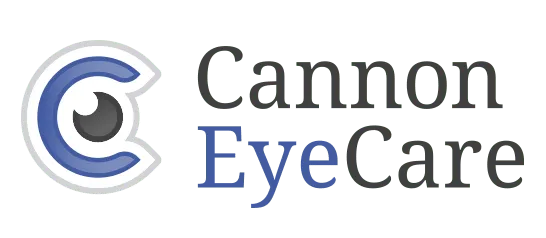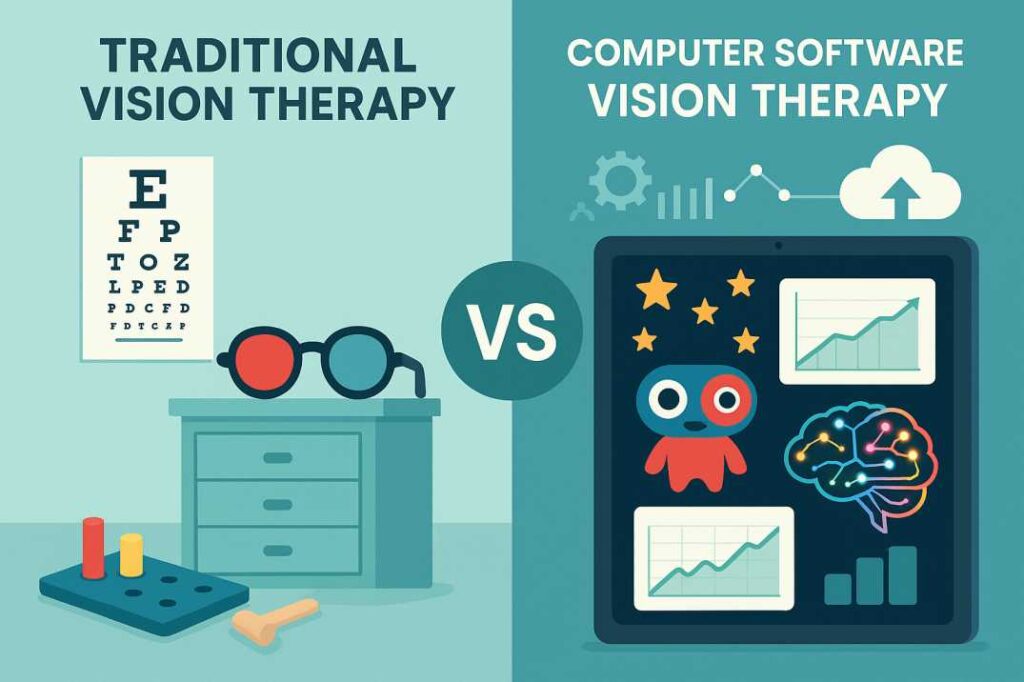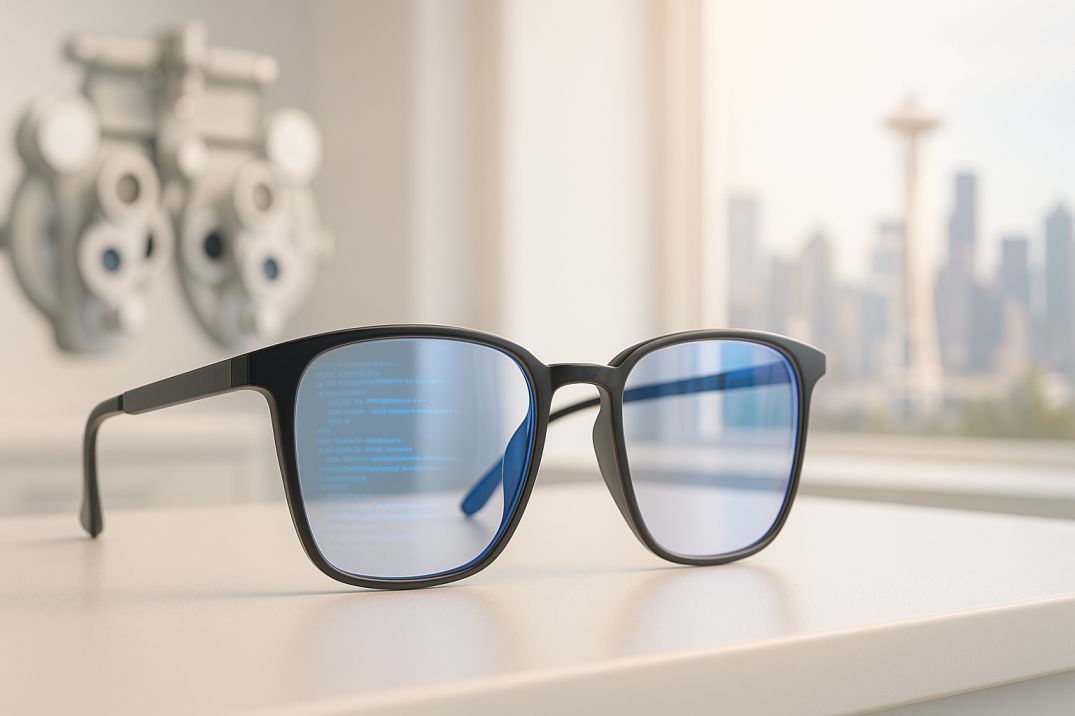Computer Software
Quick Answer: Computer software vision therapy uses AI-powered platforms and interactive games to treat lazy eye, convergence insufficiency, and digital eye strain. Leading platforms like HTS2 cost around $599 and show 70%+ clinical effectiveness rates, making them accessible alternatives to traditional $170/session in-office treatments.
Executive Summary: Computer software has fundamentally transformed vision therapy from traditional in-office treatments to engaging, personalized digital solutions that deliver measurable results for conditions like lazy eye, convergence insufficiency, and computer vision syndrome. With the broader computer vision market valued at $17.84 billion in 2024 and projected to reach $58.3 billion by 2032, these evidence-based platforms offer unprecedented accessibility and effectiveness for busy Seattle professionals seeking modern eye care solutions.
What is Computer Software Vision Therapy? (Quick Overview)
Computer software vision therapy represents a paradigm shift in optometric care, combining advanced algorithms, interactive gaming elements, and clinical protocols to treat binocular vision disorders through sophisticated digital platforms. Unlike traditional eye exercises, these programs leverage artificial intelligence to create personalized treatment plans that adapt dynamically to individual user performance and progress.
Core therapeutic advantages include:
- Standardized 30-minute daily treatment sessions conducted from home
- Clinical effectiveness rates exceeding 70% in controlled studies
- Real-time performance analytics and progress tracking
- Remote professional monitoring and treatment adjustment capabilities
- Significant cost reduction compared to traditional therapy models ($599 vs. $170/weekly session)
The Science and Technology Behind Computer Software Vision Therapy
Vision therapy computer software represents a revolutionary advancement from conventional eye exercises to scientifically validated digital interventions. These sophisticated platforms integrate artificial intelligence, gamification principles, and evidence-based treatment protocols to address binocular vision disorders that affect millions of working professionals nationwide.
Unlike traditional patching methodologies or basic eye exercises, contemporary computer software employs dichoptic training techniques that present differentiated images to each eye simultaneously. This approach compels the brain to develop novel neural pathways, effectively restructuring visual processing mechanisms to improve coordination between both eyes.
Core Technological Differentiators:
- Adaptive algorithms that modify difficulty parameters based on real-time performance metrics
- Objective progress tracking through quantifiable, clinically-relevant measurements
- Engaging game-based interfaces that significantly improve patient compliance rates
- Cloud-based professional oversight systems enabling remote monitoring and protocol adjustments
The Science Behind Vision Therapy Computer Software
Neuroplasticity and Digital Therapeutic Interventions
The scientific foundation of computer-aided vision therapy rests upon neuroplasticity—the brain’s inherent capacity to form novel neural connections throughout the human lifespan. Peer-reviewed research demonstrates that targeted visual stimulation through computer software platforms can strengthen compromised neural pathways responsible for binocular visual function.
Fundamental Scientific Principles:
- Dichoptic Training Theory: Simultaneous presentation of disparate images to each eye, compelling binocular coordination
- Operant Conditioning Paradigms: Systematic reinforcement of correct responses to accelerate neurological adaptation
- Random Dot Stereogram Integration: Sophisticated testing and enhancement of depth perception capabilities
- Anti-Suppression Methodologies: Prevention of cortical suppression of the weaker eye through controlled visual stimulation
Clinical Evidence Supporting Computer-Based Vision Therapy
Contemporary research validates the therapeutic efficacy of computer-based vision therapy platforms. A comprehensive clinical analysis of 68 amblyopic patients demonstrated statistically significant improvements in visual acuity (0.60 LogMar improvement), stereopsis enhancement, and vergence parameter optimization following six months of structured computer software training.¹
Additional validation comes from research conducted at Sankara Nethralaya, which demonstrated that computer-based diagnostic tools achieve greater than 70% sensitivity and specificity in identifying binocular vision anomalies.² This research establishes the clinical reliability of digital platforms for both assessment and treatment applications.
Recent groundbreaking research from the University of Southampton (2025) revealed that AI-enhanced computer software improved treatment success rates for pediatric amblyopia from 50% with traditional occlusion therapy to over 80% with gamified digital interventions.³
Comprehensive Analysis of Leading Computer Software Platforms
Enterprise-Grade Clinical Solutions
HTS2 Computerized Binocular Home Eye Exercise System
This web-based therapeutic platform offers comprehensive visual rehabilitation exercises, including pursuit movements, saccadic training, vergence rehabilitation, and accommodative facility enhancement. Developed utilizing established behavioral modification principles, HTS2 provides automated patient progression algorithms and comprehensive professional monitoring capabilities.
Key Clinical Features:
- Cross-platform compatibility with devices 7.5 inches or larger
- Automated goal-achievement progression algorithms
- Real-time compliance monitoring and reporting
- Dedicated patient technical support infrastructure
Professional Implementation Benefits:
- Seamless integration with existing clinical workflows
- Comprehensive patient management dashboard
- Customizable treatment protocol development
- Objective outcome measurement tools
VisionBuilder Office and Home Editions
A versatile therapeutic platform engineered for both clinical and residential implementation, VisionBuilder operates through modern web browsers with automated updates and secure cloud-based results storage. The system accommodates diverse visual skills training protocols while maintaining professional oversight capabilities.
Clinical Advantages:
- Integrated patient management system architecture
- Fully customizable treatment protocol development
- Universal cross-platform compatibility
- Comprehensive professional monitoring and reporting tools
Consumer-Accessible Therapeutic Platforms
AmblyoPlay Vision Therapy (Historical Analysis)
Editor’s Note: As of 2025, AmblyoPlay is unavailable in the United States market, though international distribution continues.
This previously prominent platform served over 25,000 patients globally through game-based therapeutic exercises targeting lazy eye, strabismus, and convergence insufficiency. The software utilized red-green anaglyph glasses for dichoptic training while maintaining exceptional patient engagement through sophisticated interactive gameplay elements.
Historical Clinical Outcomes:
- Initial therapeutic improvements are typically observed within 4-month treatment periods
- Optimal clinical outcomes are achieved within a 6-18-month treatment duration
- The adult patient population comprised over 25% of successful treatment cases
- Superior compliance rates attributable to gamification methodologies
CureSee Vision Therapy Software
Distinguished for its artificial intelligence-powered therapeutic approach combining multiple evidence-based vision therapy principles, CureSee offers individualized video-game exercises incorporating Random Dot Stereogram modules and anti-suppression training techniques.
Clinical Validation Metrics:
- Statistically significant visual acuity improvements (0.60 LogMar enhancement)
- Measurable stereopsis and vergence parameter optimization
- Multi-generational efficacy across pediatric and adult populations
- Extensive professional practitioner validation and endorsement
Clinical Benefits for Seattle’s Professional Healthcare Ecosystem
Addressing Contemporary Vision Challenges in Seattle’s Tech Sector
Seattle’s technology-intensive professional environment generates distinctive vision stress patterns that require specialized therapeutic intervention. Computer vision syndrome affects up to 90% of individuals who spend three or more hours daily at digital display devices. Vision therapy computer software specifically addresses these contemporary challenges through targeted therapeutic protocols:
Digital Eye Strain Therapeutic Solutions:
- Accommodative facility training reduces focusing fatigue during extended screen work periods
- Convergence exercise protocols improve near vision stamina for computer-intensive professionals
- Oculomotor training programs decrease visual strain during prolonged digital device utilization
- Binocular coordination enhancement protocols optimize comfortable screen viewing capabilities
Strategic Advantages for Seattle’s Professional Community:
- Seamless integration with remote work scheduling requirements
- Elimination of commute time to traditional therapeutic appointments
- Compatible integration with existing comprehensive healthcare management routines
- Demonstrable return on investment for vision health optimization initiatives
Clinical Integration Resources: Learn about comprehensive eye examination protocols and dry eye treatment methodologies available throughout the Seattle metropolitan area.
Convenience for Busy Schedules
Professional-grade computer software platforms recognize the time constraints facing Seattle’s working population. Most programs require only 15-30 minutes daily and can be completed from home, eliminating commute time to therapy appointments.
Scheduling Flexibility Benefits:
- Evening and weekend accessibility
- No appointment scheduling conflicts
- Progress monitoring through mobile apps
- Integration with existing healthcare routines
- Complementary to ergonomic workplace modifications
Choosing the Right Computer Software Platform
Assessment Criteria for Seattle Professionals
Clinical Effectiveness: Look for platforms with published research validation and endorsements from optometry professionals. Effective software should demonstrate measurable improvements in standardized vision assessments.
Technology Requirements: Ensure compatibility with your existing devices. Most platforms require tablets or computers with screens at least 7.5 inches wide. Consider internet connectivity requirements and software update frequencies.
Professional Oversight Quality platforms provide mechanisms for eye care professionals to monitor and adjust treatment protocols. This ensures appropriate progression and addresses individual needs.
User Experience Design Engagement levels directly correlate with treatment success. Choose platforms with intuitive interfaces, progress tracking visualizations, and motivational elements that encourage consistent use.
Current Pricing Analysis and Insurance Considerations (2025)
Contemporary Platform Pricing Structure:
- HTS2: $599 comprehensive program with unlimited platform access and 100 pre-loaded therapeutic sessions
- AmblyoPlay: Unavailable in the United States market; $79/month subscription internationally
- VisionBuilder: Variable pricing structure dependent upon practitioner licensing and implementation model
Traditional in-office vision therapy sessions typically cost $170 per weekly appointment, making the HTS2 program cost-equivalent to approximately 3.5 weeks of conventional treatment. Most vision insurance plans exclude software purchase coverage; however, numerous Seattle-area employers provide flexible spending account (FSA) or health savings account (HSA) benefits that can offset these therapeutic investments.
The HTS2 platform specifically includes 100 pre-loaded treatment sessions with unlimited additional session access at no incremental cost, representing a comprehensive one-time investment compared to ongoing traditional therapy expenses.
Insurance and Financial Planning Considerations:
- Investigate employer FSA/HSA eligibility for vision therapy software purchases
- Compare comprehensive platform licensing versus subscription-based pricing models
- Evaluate family licensing options for multiple-user therapeutic requirements
- Assess professional monitoring and oversight fees versus self-directed treatment programs
Implementation and Getting Started
Professional Consultation Requirements
Before beginning any computer software vision therapy program, a comprehensive eye examination and binocular vision assessment remain essential. Seattle-area optometrists specializing in vision therapy can:
- Diagnose specific binocular vision disorders
- Recommend appropriate software platforms
- Establish baseline measurements for progress tracking
- Provide ongoing professional oversight
Establishing Effective Routines
Daily Practice Optimization:
- Consistent timing builds neural pathway strength
- Distraction-free environments improve focus and results
- Progress logging maintains motivation and tracks improvements
- Regular professional check-ins ensure appropriate progression
Technology Setup Requirements:
- Adequate lighting to prevent additional eye strain
- Proper screen distance (typically 16-24 inches)
- Comfortable seating position, maintaining good posture
- Reliable internet connection for cloud-based platforms
- Screen size minimum 7.5 inches wide (tablets/computers; smartphones not supported)
Measuring Success and Progress Tracking
Objective Assessment Metrics
Computer software platforms provide quantitative measurements impossible with traditional therapy methods. Key performance indicators include:
Visual Function Improvements:
- Convergence point measurements (normal: 2-4 cm)
- Fusional vergence ranges (positive fusional vergence: 15-25 prism diopters)
- Accommodative facility rates (cycles per minute)
- Stereoacuity thresholds (measured in arc seconds)
Subjective Improvement Indicators
While objective measurements provide clinical validation, subjective improvements often drive patient satisfaction and continued engagement:
Daily Life Enhancements:
- Reduced eye strain during computer work
- Improved reading comfort and endurance
- Better depth perception for driving and sports
- Decreased headaches and visual fatigue
Future Trends in Vision Therapy Computer Software
Artificial Intelligence Integration
The integration of AI algorithms enables increasingly sophisticated personalization of treatment protocols. Machine learning analyzes individual performance patterns to optimize difficulty progression and exercise selection for maximum therapeutic benefit.
Virtual and Augmented Reality Applications
Emerging platforms incorporate VR and AR technologies for immersive vision training experiences. These technologies offer unprecedented control over visual environments and enable treatment protocols impossible with traditional methods.
Next-Generation Features:
- Eye-tracking integration for precise measurement
- Biometric feedback incorporation
- Advanced 3D visual environments
- Real-time neural pathway monitoring
Telehealth Integration
The COVID-19 pandemic accelerated telehealth adoption, and vision therapy software platforms increasingly incorporate remote consultation capabilities. This trend particularly benefits Seattle’s distributed workforce and reduces geographical barriers to specialized care.
Technology Adaptation Difficulties
Some users, particularly older adults, may experience initial challenges with computer software interfaces. Most platforms address this through:
User-Friendly Design Elements:
- Intuitive navigation with minimal complexity
- Clear visual instructions and demonstrations
- Progressive difficulty introduction
- Comprehensive technical support
Maintaining Long-term Engagement
Vision therapy typically requires months of consistent practice. Software platforms combat engagement decline through:
Motivational Strategies:
- Achievement badges and progress celebrations
- Varied exercise formats prevent monotony
- Social features enabling progress sharing
- Professional encouragement and feedback
Professional Integration and Healthcare Coordination
Clinical Implementation and Professional Integration
Successful computer software vision therapy implementation necessitates collaborative coordination between patients and qualified eye care professionals. Seattle’s optometric community increasingly embraces these digital therapeutic tools as evidence-based adjuncts to traditional clinical care protocols.
Collaborative Care Implementation Benefits:
- A professional diagnostic evaluation ensures appropriate therapeutic platform selection
- Ongoing clinical monitoring prevents inappropriate treatment progression or complications
- Seamless integration with comprehensive ocular health management protocols
- Professional documentation support for insurance claims and healthcare record maintenance
Continuing Professional Education for Healthcare Practitioners
As computer software platforms become increasingly sophisticated, eye care professionals require ongoing education regarding platform capabilities, appropriate patient selection criteria, and optimal clinical integration strategies. Professional optometric organizations now offer specialized certification programs in digital vision therapy management and implementation.
Additional Resources and Citations
For readers seeking more detailed information about the research and platforms discussed in this article, the following resources provide comprehensive data and professional insights:
1. Clinical Research on Computer-Based Vision Assessment
Diagnostic accuracy of an indigenously developed computer-based binocular vision assessment
Indian Journal of Ophthalmology, PMC9351962
https://pmc.ncbi.nlm.nih.gov/articles/PMC9351962/
This peer-reviewed study from Sankara Nethralaya demonstrates the clinical effectiveness of computer-based vision therapy software, showing over 70% sensitivity and specificity in diagnosing binocular vision anomalies. The research validates the 8-10 minute assessment time compared to traditional 30+ minute manual testing, supporting the efficiency claims made throughout our article.
2. HTS2 Vision Therapy Platform – Professional Information
Bernell Corporation – HTS2 Computerized Binocular Home Eye Exercise System
https://www.bernell.com/product/HTS/137
The official resource for HTS2, one of the primary platforms available to US consumers. This source provides detailed technical specifications, compatibility requirements, and professional implementation guidelines referenced in our platform comparison section. Healthcare providers can access pricing and training information directly through this manufacturer resource.
3. Computer Vision Market Analysis and Growth Projections
Fortune Business Insights – Computer Vision Market Forecast 2032
https://www.fortunebusinessinsights.com/computer-vision-market-108827
This comprehensive market analysis provides the verified statistics cited throughout the article, including the $17.84 billion 2024 market size and projected growth to $58.33 billion by 2032. The report offers detailed breakdowns of software vs. hardware segments and regional growth patterns that contextualize the vision therapy software market within the broader computer vision industry.
Conclusion: Embracing the Digital Transformation of Vision Therapy
Computer software has fundamentally revolutionized vision therapy accessibility, clinical effectiveness, and patient outcomes. For Seattle’s dynamic professional community, these platforms offer scientifically validated solutions that accommodate demanding schedules while delivering measurable therapeutic results for prevalent vision disorders.
The convergence of artificial intelligence, sophisticated gamification principles, and rigorous clinical research has created unprecedented opportunities for vision rehabilitation and enhancement. As the broader computer vision market continues its expansion trajectory from $17.84 billion in 2024 toward $58.3 billion by 2032, early therapeutic adoption provides significant clinical and economic advantages for both healthcare practitioners and patients.
Key Clinical and Strategic Insights for Seattle Professionals:
- Computer software offers clinically-validated alternatives to traditional vision therapy with documented effectiveness rates exceeding 70%
- Contemporary platforms accommodate demanding professional schedules through flexible, home-based treatment protocols requiring only 30 minutes daily.
- Professional clinical oversight ensures safe and effective treatment progression through sophisticated remote monitoring capabilities. A strategic one-time investment of approximately $599 provides sustained long-term benefits for digital eye strain and complex binocular vision disorders.
- Seattle’s progressive healthcare infrastructure and technology adoption culture support the seamless integration of digital vision therapy solutions into comprehensive eye care management.
Whether addressing computer vision syndrome resulting from extensive digital screen exposure or managing complex binocular vision disorders, computer software platforms represent the definitive future of vision therapy—clinically accessible, therapeutically effective, and ideally suited for contemporary professional lifestyles and healthcare delivery models.
Clinical Implementation Recommendation: Contact qualified Seattle-area vision therapy specialists for comprehensive binocular vision assessment, professional platform evaluation, and personalized therapeutic protocol development. Learn more about vision therapy programs and binocular vision treatment options.
FAQs
-
Computer software for vision therapy includes specialized programs like VTS-4, VisuoPrime, and Vivid Vision that use 3D graphics, interactive exercises, and virtual reality to treat conditions like amblyopia, strabismus, and convergence insufficiency.




